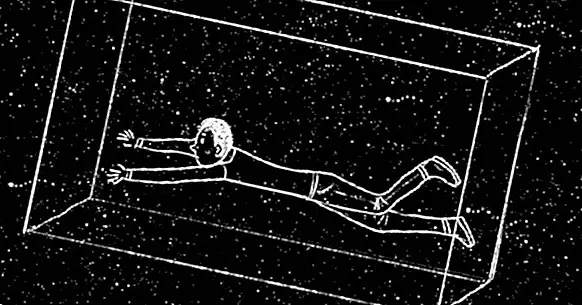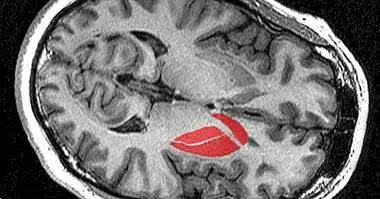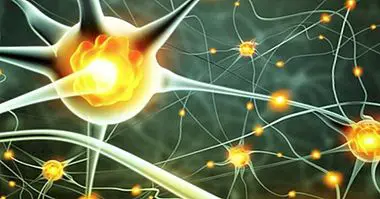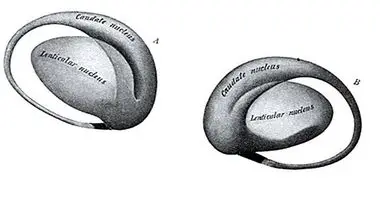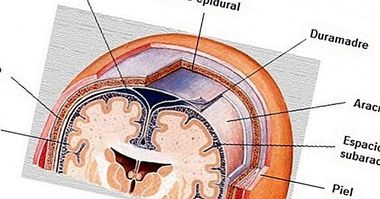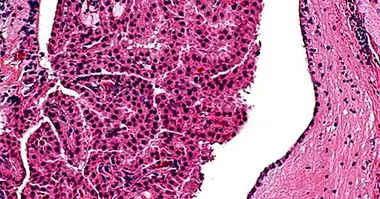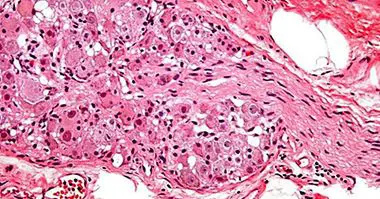Jerking before going to sleep: myoclonic spasms
It's three o'clock at night. You wake up abruptly, practically with a jump on the bed, with the feeling of falling from an eight-story building . Notes as your viscera are still reacting with some panic.
Your partner wakes you up at three in the morning, slightly surprised and annoyed. It tells you that while you were sleeping you have kicked him several times. These two small fragments reflect the existence of a phenomenon that occurs with great frequency in most of the population: the realization of small sudden and involuntary movements during sleep.
These movements are called Myoclonic spasms at night .
What is myoclonus?
When speaking of myoclonic spasms reference is made to a series of abrupt and brief, totally involuntary muscular contractions that cause a displacement of the body or a part of it. They are usually caused by sudden muscle contractions or muscle relaxation .
While this type of spasm can be found in some disorders such as epilepsy, there are also so-called benign myoclonus. These are generally not considered pathological, being considered normal in people without associated pathology. In fact, a phenomenon as common as hiccups would be a valid example of benign myoclonic spasm .
These spasms can appear both in the waking state and during sleep, focusing the present article on the latter.
Myoclonic spasms at night
Although the general definition of myoclonus reflects the type of phenomenon spoken of, those that occur during sleep have a peculiarity: as with hypnogogic and hypnopompic hallucinations, they occur in a state of altered consciousness: sleep or the transition between it and wakefulness. Myoclonic spasms would be in this case a type of parasomnia , phenomena or episodic disorders that occur during sleep and that are characterized by the presence of vegetative or motor symptoms.
It is a non-pathological phenomenon in general with a high prevalence in the population. It is estimated that around 70% of the population has presented at some point a myoclonic spasm During the dream. Now, if the symptoms occur repetitively and constantly it would be advisable to go to a doctor's office, because if they occur persistently it could indicate the presence of a disorder.
Keep in mind that it is possible to confuse this type of alteration, not dangerous, with an epileptic crisis. In this aspect one of the few ways to differentiate them is by electroencephalogram, not assuming the myoclonic spasms the same type of alterations that are visualized in cases of epilepsy.
Neurological causes of myoclonic spasms during sleep
The reason that these spasms occur during sleep has a neuroscientific explanation.
The appearance of nocturnal myoclonus it is due to the presence of a lack of coordination, to the maintenance at the same time of the activity, of two specific brain areas . Specifically, the reticular formation or system of reticular activation (SAR) and the ventrolateral preoptic nucleus.
Reticular activation system
This system located in the trunk of the brain is the main one in charge of keeping us alive, because it is the brain system that directs unconscious processes such as breathing, digestion or heart rate. Apart from these physiological processes, it also participates in the maintenance of the alert and the focus of attention, maintaining the waking state.
Ventrolateral preoptic nucleus
The ventrolateral preoptic nucleus can be found in the anterior hypothalamus, near and in contact with the occipital lobe. This nucleus is responsible for "turning off the consciousness" inducing the sleep state, as well as protecting the organism during sleep, causing body paralysis that prevents us from moving and damaging during deep sleep.
When myoclonic spasms occur
To understand the appearance of spasms, we must bear in mind that although during sleep it reduces its functioning, the SAR does not cease its functioning (since this would cause the death of the patient).
Thus, this system still has some activation that can sometimes come into contradiction with the sleep function of the ventrolateral preoptic nucleus that causes sleep.
This contradiction, of which the cause is still unknown, can cause partial motor reactions typical of wakefulness during sleep . In other words, it is the origin of myoclonic spasms during sleep.
Types of nocturnal myoclonus
Myoclonic spasms during sleep they are not uniform and homogeneous, but there are three basic types .
A first type is found in repetitive movements during sleep. Similar to the typical movements of epileptic seizures, these movements appear during non-paradoxical sleep, in the case of repetitive movements of short duration. Although treatment is not usually required, very severe forms can be treated pharmacologically
A second type of myoclonic spasm of presentation during sleep are nighttime shaking or startle myoclonus. The clearest example of this type of spasm is the typical movement that is made when waking up from a dream in which we have the sensation of falling . They usually occur in the superficial dream, that is to say in the first two phases of the dream, causing the awakening of the one who suffers it with a certain brusqueness. They are usually massive shaking of the whole body, especially of the lower extremities.
Finally, some spasms can be found at the time of transition between wakefulness and sleep. This type of myoclonus, cataloged as nonspecific, acts on the muscles of the face and extremities.
Bibliographic references:
- Ferber, R. & Kryger, M. (1995). Principles and Practice of Sleep Medicine in the Child. W.B.Saunders Company.
- Besag, F.M.C. (nineteen ninety five). Myoclonus and Infantile Spasms. In: Robertson MM, Eapen V, eds. Movement and allied disorders in childhood. Chichester: John Wiley and Sons, Ltd .; p. 149-76.
- Fejerman, N .; Medina, C.S. & Caraballo, R.N. (1997). Paroxysmal disorders and episodic non-epileptic symptoms. In: Fejerman N, Fernández-Álvarez E, eds. Pediatric neurology 2nd ed. Madrid: Editorial Medica Panamericana S.A .; p. 584-99.
- Fernández-Álvarez, E. & Aicardi, J. (2001). Movement disorders in childhood. London: Mac Keith Press.
- Morairty, S .; Rainnie, D .; McCarley, R. & Greene, R. (2004). Disinhibition of ventrolateral preoptic area sleep-active neurons by adenosine: a new mechanism for sleep promotion. Neuroscience; 123: 451-7
- Svorad, D. (1957). «Reticular activating system of brain stem and animal hypnosis». Science 125 (3239): 156-156.

